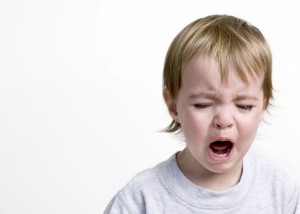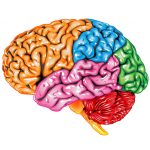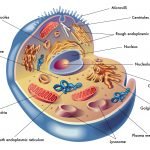Pediatric Bipolar Disorder
Tara Peyman, ND

Current diagnosis of bipolar disorder among young children is 40 times greater than its prevalence 10 years ago.1 It is unclear whether this increase is a result of previous underdiagnosis, current overdiagnosis, or a true increase in incidence. A 2010 study2 published in the Journal of Clinical Psychiatry found that 75% of children with manic symptoms and rapid fluctuations in mood might in fact be misdiagnosed as having bipolar disorder. Many of these children do not have symptoms that are consistent with the Diagnostic and Statistical Manual of Mental Disorders (DSM) criteria for bipolar disorder; rather, they typically have tantrums with uncontrolled mood swings and violent behavior.
In the years ahead, most of these children will be diagnosed as having temper dysregulation disorder with dysphoria, a new pediatric diagnosis that is much more specific and accurate for this type of psychological condition. This diagnosis is included in the updates to the fifth edition of the DSM,3 which is scheduled to be published in 2013. Until then, children displaying this behavior will continue to be diagnosed as having bipolar disorder (usually bipolar disorder not otherwise specified [NOS])4 and will be prescribed antipsychotic medications that have not been extensively studied in children. Even with the new diagnostic option, however, most psychiatrists are likely to use the same pharmaceutical treatments as with a diagnosis of bipolar disorder. A safe and effective alternative to those prescriptions is the use of homeopathic medicine to treat these cases of severe mood disorders. One such patient was seen at my office last year.
A Wild Rage With Vacant Eyes
Tristan was a 7-year-old boy who had been diagnosed as having bipolar disorder NOS by his psychiatrist. He was taking aripiprazole and carbamazepine, which were causing significant adverse effects, including excessive somnolence and difficulty focusing in school. Despite taking these prescriptions at dosages high enough to cause adverse effects, they were still not controlling his symptoms. His parents were exasperated and exhausted from attempting to deal with his daily behavioral issues.
When I spoke with his mother over the phone for a free 15-minute consultation before his initial visit, I heard Tristan in the background playing with his brother and sister. I overheard talking and playing, followed by a sudden piercing shriek. His mother reported that this was typical for him; he would seem perfectly fine one minute, and the next minute he would fly into a wild rage. Sudden loud screaming and violent striking characterized the behavior. He would punch or kick his brother, and he would bite his siblings or parents in the worst part of the rage.
With his mother’s description and my observations alone, I was already considering Belladonna, Stramonium, Hyoscyamus, and several other remedies. On meeting Tristan a few days later, I agreed to take the case. I discovered that, in addition to his current violent behavior, he had severe separation anxiety. The anxiety started when he was only a few years old and persisted throughout his childhood. Any time his mother would exit the room or leave him at school, he would run to her, cling to her legs, and scream “No, mommy, don’t leave me alone! Hold me!”
He was afraid of everything. He could not go to the movies because he not only was afraid of the dark but was even more intensely afraid of cartoon characters in the movies. He imagined they were monsters that were going to attack him. He expressed the same fear of mascots at sports games, thinking that they were terrifying monsters. He was old enough to understand that they were not dangerous, yet he was still deathly afraid and could not enjoy these kinds of events with his family.
When afraid or upset in general, he needed to be held. After one of his wild outbursts, he would immediately run to his mother and demand to be held and hugged. He was also intensely jealous of any attention or gifts that his siblings or friends received. This interfered with relationships at home, school, and events like birthday parties.
During the rages, his facial expression changed, so that the look in his eyes appeared vacant. His mother could not communicate with him when he was in a rage; it was as if he was not fully conscious of the violent behavior during the episode. He seemed to have a good understanding that his behavior was unacceptable and did not want to hurt his siblings or parents; he wanted to control his mood fluctuations but did not know how.
In deciding on a homeopathic medicine for Tristan, I was most interested in the vacant look in his eyes during the episodes, the violent behavior with biting, his fear of imaginary monsters, the clinging and intolerance of being left alone, and the sudden shrieking. Based on the totality of symptoms and the most characteristic features of the case, I prescribed Stramonium. I started with a 6C potency and had him take it once daily at night.
I followed up a few days later by phone. The violent episodes were less intense and less frequent already. He was less anxious as well and was not as fearful in general. He did well for a few more weeks and then needed a 30C potency, which totally eliminated the outbursts. His behavior and mood improved dramatically.
Phosphorus Follows Well
Tristan was seen in my office 2 months later. His violent behavior was completely gone. He now had a different concern of insomnia. He could not sleep because of anxiety and fear of the dark. His anxiety was no longer about terrifying imagined monsters but was focused on worries about his friends. He was anxious for a friend who was sick and could not sleep because he was so concerned about the boy. He was also more sensitive to ghost stories, sad news, and loud noise.
His behavior in the office was entirely different as well. He had transitioned from acting jealous and violent to being generous and overly concerned about the well-being of others. His younger brother and sister had also come to the visit that day. One of them was playing on the floor, and Tristan got up to offer his chair to his brother, speaking in a courteous and sympathetic tone.
He now needed Phosphorus. I have often seen this transition between Stramonium and Phosphorus in cases of mental illness. His insomnia and anxiety about others were completely resolved with Phosphorus (6C), and he almost immediately needed Stramonium again to avoid a return of violent behavior. He did well with a Stramonium 200C potency for several more months, and then Stramonium 1M brought full stability to his mood and behavior, so that he could be functional and productive in school and at home.
The increasing improvement with each successive potency of Stramonium is an excellent prognostic sign. I helped him taper and discontinue aripiprazole and carbamazepine. He was no longer fearful or overly jealous in relationships. He went to school without debilitating separation anxiety. He could enjoy life as a normal child, perhaps for the first time.
Comparative Study of Stramonium for True Mania
More rarely, a case of pediatric bipolar disorder can be properly coded as bipolar I. Recently, I took the case of a 15-year-old girl who experienced a true manic episode with psychotic features. Before the episode, she was doing well in school, had a happy social life, and was in good physical health. There was no history of emotional trauma or abuse. Over several weeks, she started to experience increased energy and decreased need for sleep. Her speech became excessive and rapid, and eventually she was unable to sleep at all because of extremely high energy and racing thoughts. In the worst part of her mania, she also developed a sudden intense fear of the dark.
She could not stop talking, all day and night. Her thoughts became grandiose, dreaming up big plans for the future of her family, her school, and the entire country. She was excited, lively, and engaging in her speech and behavior. These symptoms are common to manic episodes but were characteristic by intensity. It is normal in mania for the patient to be talkative and have grandiose ideas, but these particular symptoms were so pronounced in her case that I had to consider remedies that can cure this specific kind of mania. When her thought content and excessive speech became delusional and debilitating, she was hospitalized for 2 weeks and was prescribed valproic acid and risperidone.
The most characteristic symptom in her case, however, was yet to be reported. She told me that since becoming manic she was unable to tolerate the blinds being open in her living room. At first, I thought she might be overly sensitive to light, but on asking for clarification, she said it was the light reflecting off the television that bothered her. Seeing that shining reflection was irritating to her emotionally. This aggravation from shining objects was the guiding symptom that completed the case. I considered Cannibus indica, Lyssinum, and several other more common remedies as well, but this was another case of the need for Stramonium to treat pediatric bipolar disorder.
Ethical Considerations in Treating Mental Illness
In the diagnosis and treatment of children or adults with mental illness, there are often gray areas in determining the ideal protocol. When is psychiatric hospitalization the best option for a child? If long-term regimens of antipsychotics have not been studied in children, can their use be justified in some severe cases of pediatric bipolar disorder? Are high energy and emotional reactivity actually normal in children, and is this natural behavior misdiagnosed as a mood disorder?
These questions and other complications arise frequently when undertaking cases of serious mental illness in private practice. Sometimes, the most challenging aspect of pediatric bipolar disorder is not treating the child but managing the anxiety of the parents. Occasionally, I find that the parents need more help than the child, both with parenting concerns and with their own emotional health.
Ultimately, my goal is always to improve the quality of life for the patient and the family. Sometimes, that means homeopathic treatment alone or perhaps a combination of conventional medication, counseling, and naturopathic therapeutic options. I have learned that it is best to set aside assumptions and biases and to truly listen to the needs of each patient, so that I can serve to help achieve the goals of real recovery.
Dr. Tara Peyman, ND is a naturopathic physician in the Phoenix, Arizona, area. Her primary passion is treating bipolar disorder and mental illness with classical homeopathic medicine. Dr Peyman has coauthored clinical practice Naturopathic Physicians Licensing Examinations and writes articles for Arizona Networking News. Visit www.DrTaraPeyman.com for more information
Refernences:
1. Moreno C, Laje G, Blanco C, Jiang H, Schmidt AB, Olfson M. National trends in the outpatient diagnosis and treatment of bipolar disorder in youth. Arch Gen Psychiatry. 2007;64(9):1032-1039.
2. Findling RL, Youngstrom EA, Fristad MA, et al. Characteristics of children with elevated symptoms of mania: the Longitudinal Assessment of Manic Symptoms (LAMS) study. J Clin Psychiatr. 2010;71(12):1664-1672.
3. American Psychiatric Association. Proposed revision: APA DSM-5: temper dysregulation disorder with dysphoria. December 2010. http://www.dsm5.org/ProposedRevisions/Pages/proposedrevision.aspx?rid=397. Accessed February 22, 2011.
4. Leibenluft E, Rich BA. Pediatric bipolar disorder. Annu Rev Clin Psych. 2008;4:163-187.



